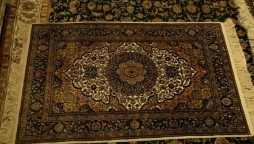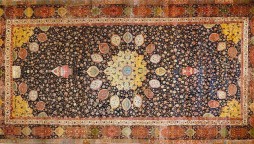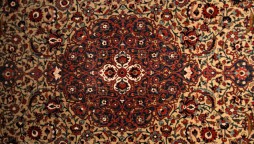A Look at the Early Persian Rug Black Market

While the smuggling of high-value Persian rugs began soon after the 1979 Iranian revolution, when they were designated as national treasures by the Iranian government, it was during the mid-1980s that the black market for Iranian-made rugs reached its peak. With strict sanctions having gone into effect between Iran and many Western countries, a once booming antique rug market had come to a halt, effectively driving the black market into full operation.
As many rug producers and collectors in Iran relied heavily on the significant markup that came from selling Persian rugs to Americans and Europeans, longstanding connections that were at one time used solely for securing high-value rugs were transformed into clandestine smuggling networks across Iran.
It was a dangerous game for those who would otherwise be legitimate exporters and suppliers to the Western market during periods when these sanctions didn’t exist. But now the threat of arrest, jail or even being killed on their journey was a fact of life for merchants looking to avoid the loss of their business, their homes, and potentially much more.
The smuggling odyssey at times began in the far northern city of Tabriz, Iran, where rugs a century or more in age, and worth tens of thousands of dollars or more, were readied for their long journey out of the country. Transported over hundreds, or sometimes thousands of miles in largely nondescript vehicles, and at times even camelback, these handmade articles made their way to the Iranian shoreline in order to prepare them for shipping across the Persian Gulf.
After reaching their destination at southwestern Iranian seaports, the rugs were typically loaded onto small sailing ships in the dead of night, where they were then tucked away in the more clandestine sections of a ship’s hull. From here, the Persian rugs began their journey to the market-friendly shores lying just across the gulf to Middle Eastern and African countries.
If all things went as planned, and the ships weren’t boarded or blown out of the waters by the Revolutionary Guard’s naval patrols, the Persian rugs would meet their contacts in other countries. One of the more common destinations was the coasts of Saudi Arabia, where sheiks already had extensive smuggling networks in place for centuries, making the now-illegal trade between countries complex, but still possible.
With Saudi Arabia and other countries being more welcoming to trade with the West, the carpets would often find themselves being shipped yet again, to Europe and then on to the Americas. However, the most precious articles, which were usually stripped of their original value by the numerous exchanges that had already occurred, remained in the hands of Middle Eastern collectors.
This left the bulk of those being shipped to the West as prized, but inferior, assets when being compared to those staying behind at the tail end of the shipping cycle prior to their movement westward.
But on it continued – for decades, in fact – and it’s only been recently that Persian rugs have become legally available again in the West as a consequence of sanctions being lifted on exports earlier this year. And it is the hope of those who have a great adoration for the fine craftsmanship of Persian rugs in particular that trade of these remarkable pieces persists.




